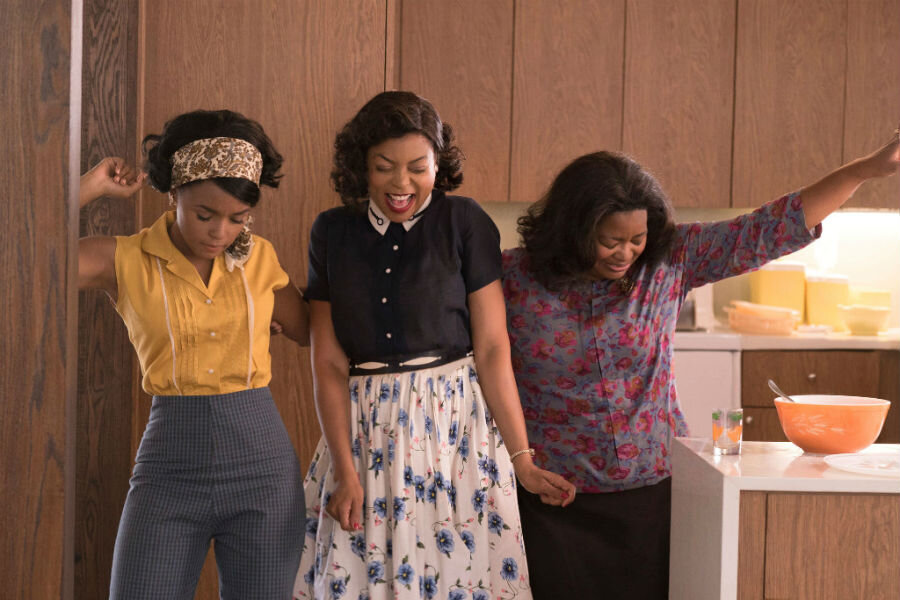 January 24, 2017
January 24, 2017
Los Angeles — After two consecutive seasons, the whiteout plaguing the Academy Awards has ended.
Tuesday dawned in Hollywood with diversity at center stage, as this year’s Oscar nominations recognized a range of stories and faces that for two years had been conspicuously absent. People of color punctuated every category from Best Picture to cinematography, reflecting what some see as a response to the online outcry of #OscarsSoWhite.
“It’s a watershed in a lot of ways, not just in front of the camera but also behind the camera,” says Russell Williams, a professor of film and media arts at American University in Washington who has won two Academy Awards for his work in sound production.
“There’s no two ways about it,” he says, “the Academy was very sensitive to, I think, the criticism that the two years of #OscarsSoWhite generated.”
This year’s nominees also speak to what some critics hope is a broader, more long-term effort to close the gap between Hollywood’s vision of itself as a bastion of multiculturalism, and the lack of diversity that has long hounded the industry. The seven minority actors nominated tie the record set in 2007. But some culture watchers say that the behind-the-scenes nominations, such as Kimberly Steward’s for producing „Manchester by the Sea,“ may be even more important – both for long-term diversity and increasing the variety of stories told.
Against a backdrop of nationwide racial unrest and divisive political rhetoric, prominent figures like Oscar winner Meryl Streep have used awards shows as opportunities to express the industry’s commitment to diverse communities and their stories. But such pronouncements have also served to highlight a less ideal reality: that people of color, women, and other minority groups are still underrepresented in Hollywood.
“There’s almost a contradiction,” says Darnell Hunt, director of the Ralph J. Bunche Center for African American Studies at the University of California, Los Angeles. “Hollywood is composed of people who are individually quite progressive and liberal in many of their outlooks, but are part of an industry that is largely white and male.”
•••
Movies, like all fiction, reflect artistic idealism and the heights of a society’s aspiration and imagination. It’s no surprise, then, that those in the industry tend to want to embody idealistic – and often liberal – values, says Anthony Harkins, a professor of history at Western Kentucky University who specializes in US popular culture.
“My sense is the Academy, the bureaucracy, the infrastructure, the artist communities, certainly very much want to present themselves as inclusive, diverse, and open to all audiences,” he says.
And to the degree that Hollywood has succeeded in doing so, Professor Harkins adds, lives are changed.
Professor Williams – whose own Hollywood career spans 30 years and more than 50 films – says he became a sound mixer after learning Quincy Jones did the score for 1967’s “In the Heat of the Night.”
“Here I am, taking music, loving and learning jazz, and I see they trusted the score [of this film] to an African-American,” Williams says. “Black people working behind the camera? For me that was a revelation.”
By 1991, Williams had won two Oscars for Best Sound, for his work on the films “Glory” and “Dancing With Wolves.”
Yet stories like Williams’s come up against Hollywood’s long history of excluding women and minorities: from the use of blackface in 1927’s “The Jazz Singer” all the way to the casting of white actors like Scarlett Johansson in roles originally written for Asians.
The trouble stems in large part from the pale, male majority at the top of the entertainment food chain, Professor Hunt says. In 2015, white men made up nearly 88 percent of executive staff in Hollywood’s top talent agencies, which represent a majority of film directors, writers, and actors.
Such homogeneity affects the kinds of stories that get told, who tells them, and how, he says.
Indeed, in 2014, women and minorities made up less than one third of characters with speaking lines in major films and TV shows. The same year, minorities made up 12.9 percent and women 4.3 percent of directors in 163 films examined.
“Art is not an objective thing,” Hunt says. Technical criteria aside, “it’s subjective, it’s based on experience. [Decisionmakers] will relate to certain types of experiences, and that shapes what types of projects they will likely get behind and support.”
•••
The good news, critics say, is that this year’s Oscar nominees present the array of Hollywood’s talent like never before.
Four of the nine films proposed for Best Picture tell stories of diversity. The supporting actor and actress categories are graced by the likes of Mahershala Ali, Dev Patel, Naomie Harris, and Octavia Spencer. Though the races for leading roles remain heavily white, Irish-Ethiopian actress Ruth Negga received a nod for her performance in “Loving,” and Denzel Washington collected his fifth nomination in the category.
The Academy also acknowledged people of color behind the scenes.
Barry Jenkins was recognized for both directing and adapting the screenplay for “Moonlight,” which follows a young black man through his struggle with race and gender identity. Bradford Young became the first black American to be nominated for the cinematography category for his work on the science-fiction film, “Arrival.”
And it’s more than just the total numbers – it’s the fact that the nominees are from a wide variety of films. In addition to “Moonlight,” “Hidden Figures,” a critical and box-office hit, celebrates the unsung contributions of three black women to the American space mission in the 1960s. “Fences,” adapted from August Wilson’s 1983 play, is about a sanitation worker who wrestles with a lost chance at a baseball career because he was too old when the major leagues opened up to black players.
“[A]side from their shared racial demographics, these films tell very different kinds of stories,” Slate’s Aisha Harris writes . “[T]here’s diversity of storytelling, too.”
In the same vein, Williams credits Mr. Young for being recognized purely for his craft and not for telling a story that was about a specific community or history.
“In my career, I wasn’t always looking for films that had entirely black casts or subject matter.






